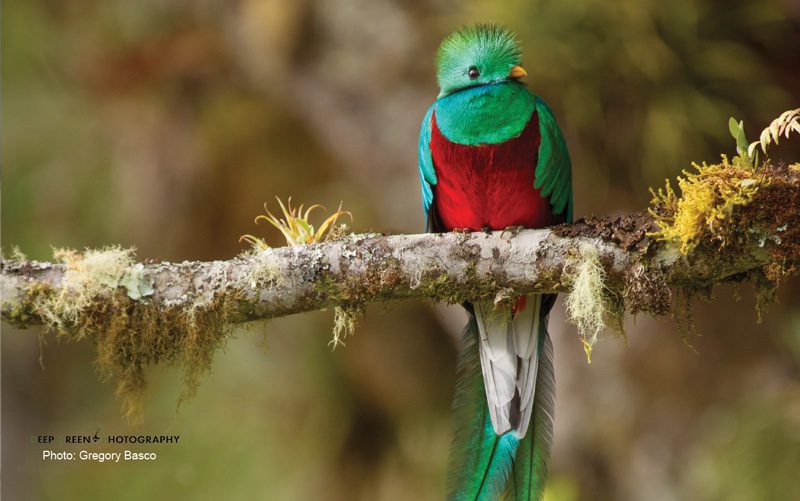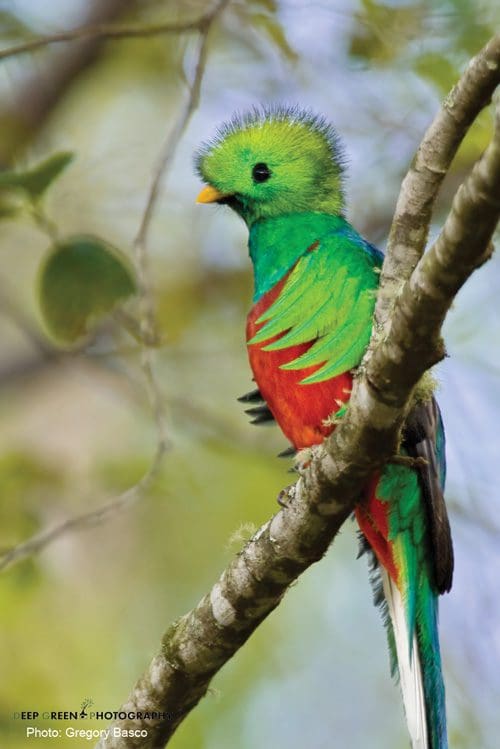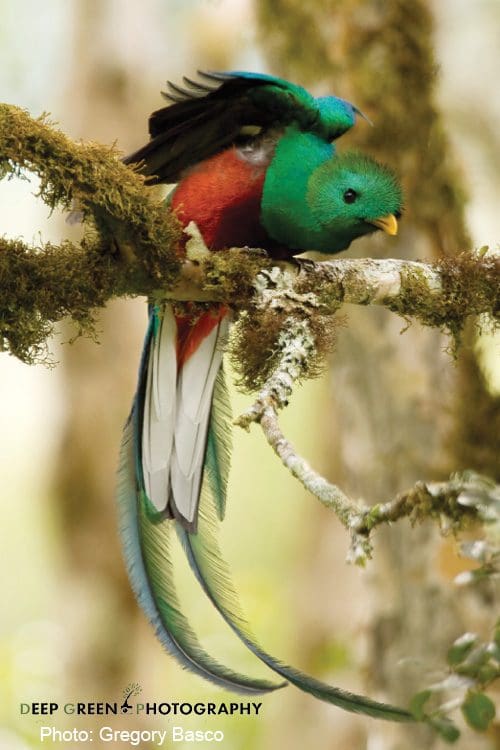
Behind the Image: Resplendence, Quetzal Photography as Ecotourism
Greg Basco – Behind the Image, Resplendence, Quetzal Photography as Ecotourism: Nature photography is often a solitary pursuit. The end result more often than not involves self-fulfillment or personal achievement when our photos are acclaimed or published. For me, there’s nothing wrong with that; photography is my business. Awards mean prestige and lead to more sales. And more sales mean I can pay the bills.
Local landowners take
obvious pride in helping
to protect the quetzal species.
For true nature photographers, however, both professional or amateur, I think the initial passion springs from an already existing love of nature.
I studied conservation and biology before falling into photography. Various photo projects I work on currently support habitat conservation, and I also run photography workshops (Foto Verde Tours) in Costa Rica and other Latin American countries. This particular type of nature tourism can benefit local people as well as species/habitat conservation. That’s ecotourism at its core, and it’s just such a program that has allowed me to photograph resplendent quetzals in the Costa Rica highlands.
 The scene
The scene
Resplendent quetzals are the Holy Grail for birders and bird photographers visiting the American tropics. The males are adorned in shimmering green and red feathers, sporting very long secondary covert feathers (anatomically not tail feathers, but certainly viewed as such). Finding a male in great condition, on an open and attractive perch with a good background, is an amazing experience.
A few years ago, I was scouting a cloud forest lodge for my photo tours in Costa Rica’s Talamanca mountain range. In conversation with the family owners of the lodge, they told me about their idea of involving local farmers in showing tourists the resplendent quetzal. I thought that sounded fantastic, and headed out with them that afternoon to visit a local farm where these birds were coming to feed on a wild avocado tree. With a bit of patience, I was rewarded when a beautiful male perched at eye level only 30 feet away from me.
My company, Foto Verde Tours, now collaborates with this lodge to provide photographic opportunities for our own international clients and other photographers from around the globe. The lodge’s business has grown, and that’s been good for the quetzal.
Camera settings
Since quetzals move around quite a bit, I usually opt for handheld techniques when photographing them. Even though I’m using a pretty big lens, the stability that a tripod offers is offset by the time it takes to set it up quickly on uneven ground. For all the shots here, I used the widest aperture that my lens offers, usually f/2.8 or f/4. Those apertures let in more light, so I can usually get a fast enough shutter speed to hand-hold my lens, even in the relatively dark cloud forest.
The other benefit of wide apertures is that they offer shallow depth of field. I can get my subject sharp but have my background fall out of focus so that branches, leaves and trees behind the subject don’t become too distracting.
I see many bird and wildlife photographs with poster-board smooth backgrounds — just a solid wash of color. While that certainly sets off the subject, I’m not a fan of these kinds of images. I prefer backgrounds that give a bit of context to my subject’s environment. Of course, there’s a fine line between including interesting background elements and having them detract from the subject. I’m constantly looking to straddle that line when using a big lens to photograph birds or wildlife. The backgrounds in the quetzal images showcased here succeed in that regard.
 Quetzal photography as ecotourism
Quetzal photography as ecotourism
My photo tour clients always value their resplendent quetzal images for two reasons.
First, these birds are rare and seldom apt to pose in great spots (being out in the open makes them vulnerable to red-tailed hawks). Obtaining a good image of a quetzal involves skill to some degree, but luck is actually much more important.
The second reason these images are special is that our visits to farms where we photograph the birds directly generate supplemental income for landowners in this relatively poor, mountainous area of Costa Rica. It has even changed some of their farming decisions. I always take the opportunity to chat with the local landowners, who take obvious pride in helping to protect the quetzal. How do they do that?
Because the supplemental income stream from tourism is tied directly to the birds’ continued presence and well-being, these farmers now take the quetzal into account when deciding where to plant a new field. If there is a quetzal nesting or feeding every year from a certain wild avocado tree, that area of the field is left unplanted, to give the birds some space. Previously, these farmers might have cut down trees on farmland that they now consider untouchable for the quetzal’s sake.
Ecotourism is sustainable when everybody wins — tourists, local people, and animals alike. This lodge’s project to protect the resplendent quetzal is a perfect example of how nature photography can become ecotourism.

